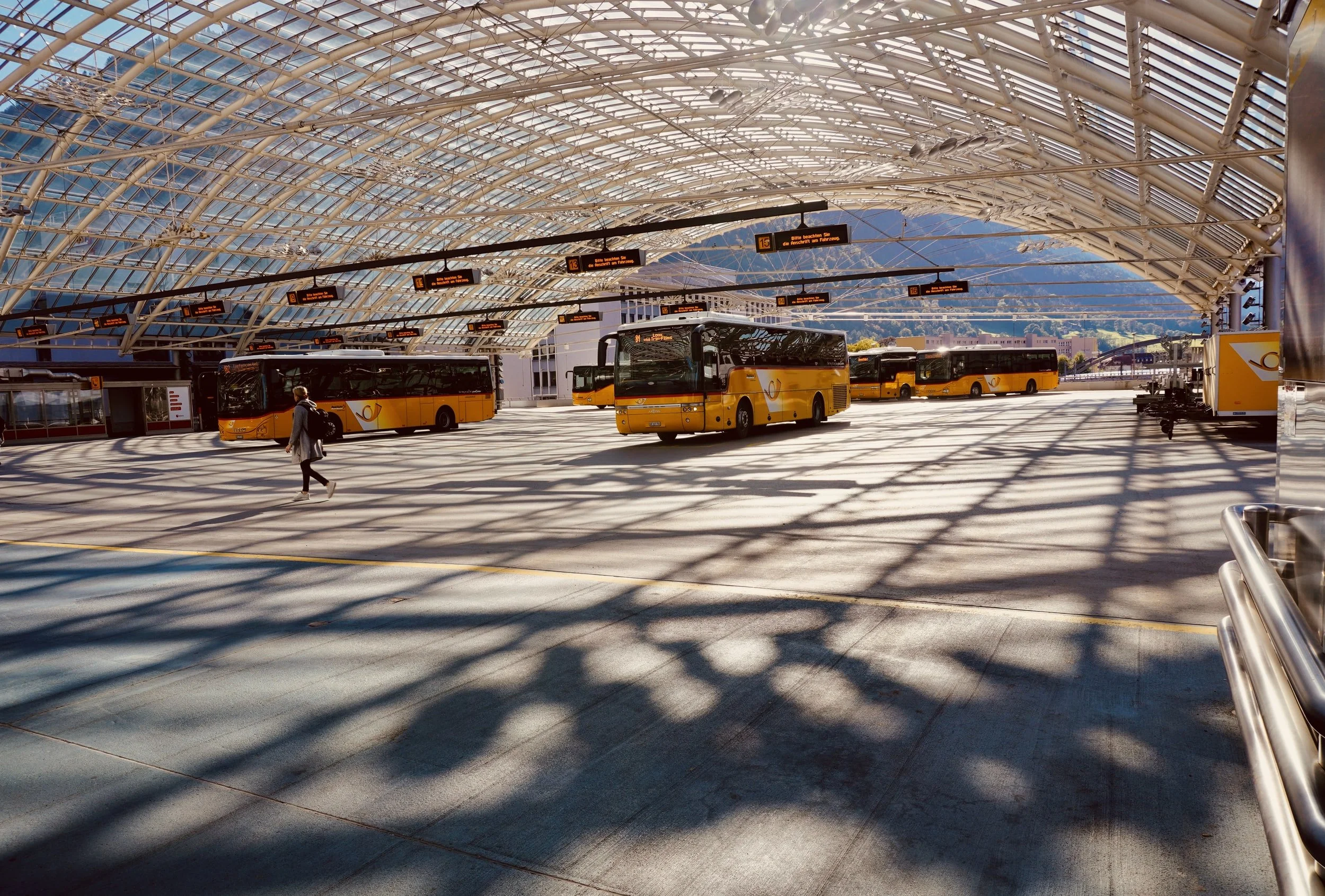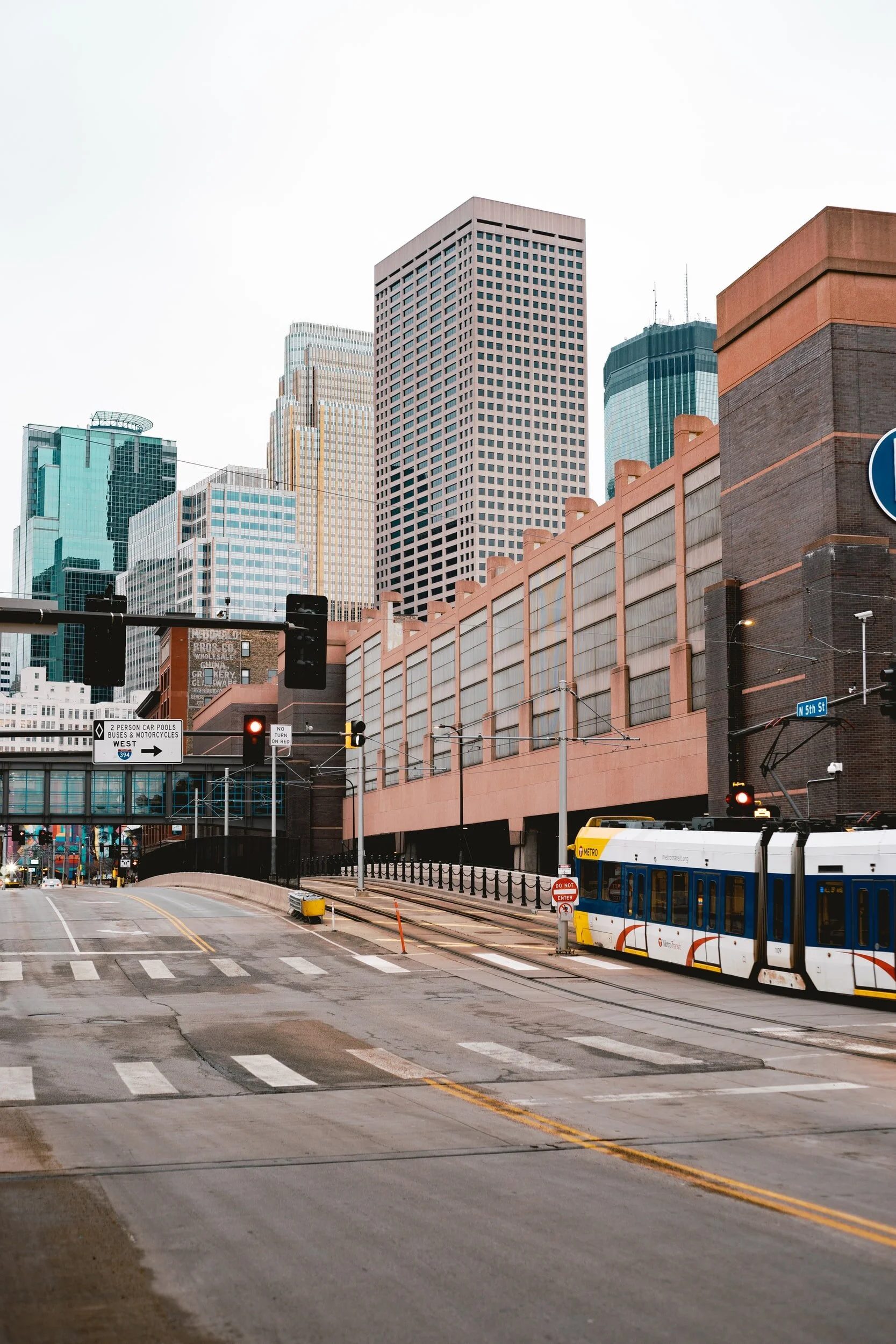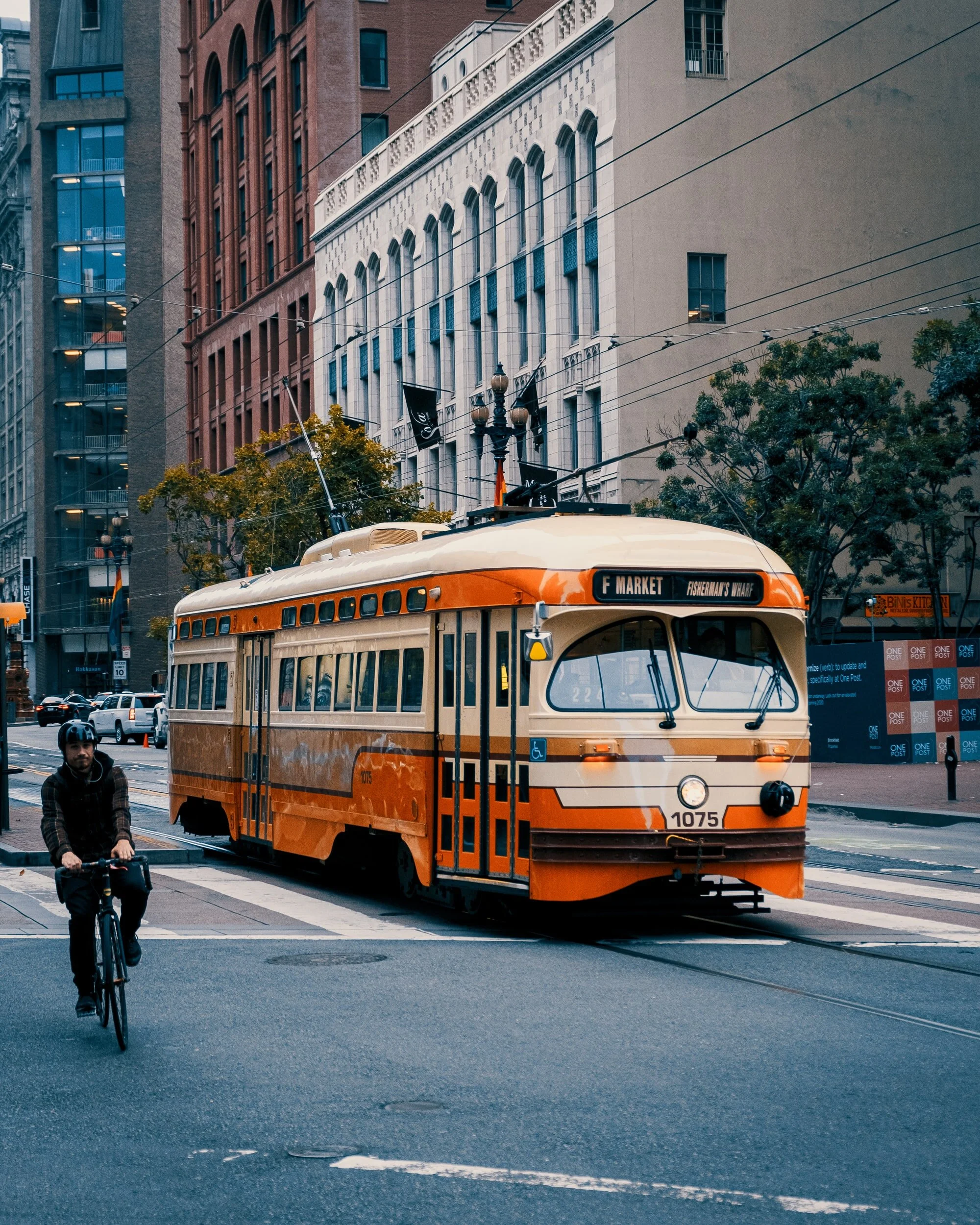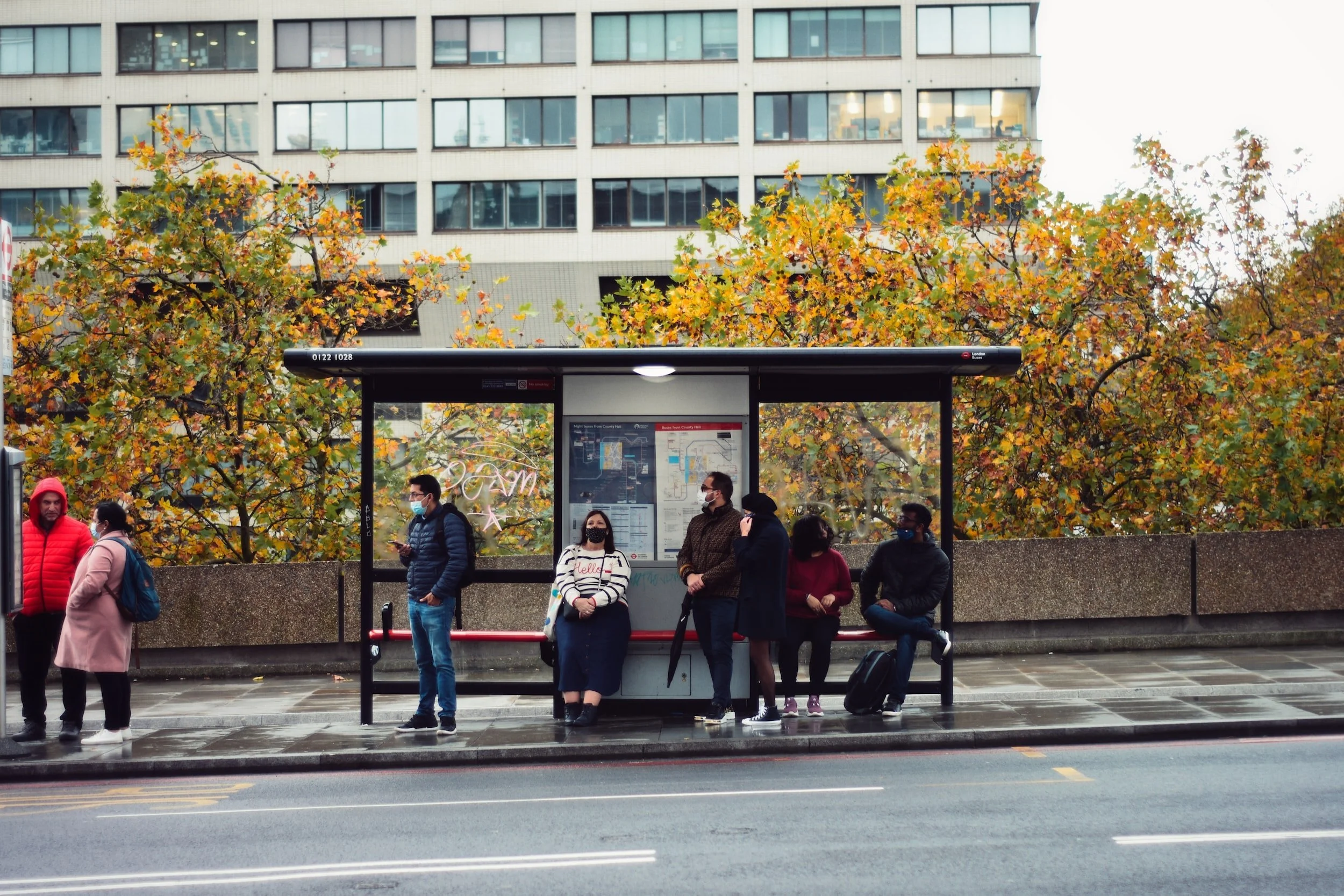‘Mobility Justice’: How cities are rethinking public transportation after COVID
‘Mobility Justice’: How cities are rethinking public transportation after COVID
By Dan Zukowski, Grist, October 19, 2021
word count: 1614
Shavel’le Olivier relies on Boston’s public transit to do her shopping, run errands, and visit family. She lives in Mattapan, a neighborhood in the southwest corner of the city where 74 percent of residents are Black and 16 percent Hispanic. It can take an hour to travel less than five miles from her house on the bus, due to heavy traffic. She grew up thinking that’s just the way things work, but now she’s questioning the status quo.
Bus route 28, which serves the neighborhoods of Mattapan, Roxbury, and Dorchester — where two-thirds of Boston’s Black residents live — gets some of the highest ridership in the city. That was true before the pandemic, and remains true today. Yet despite the essential role it plays, route 28, like many urban bus lines nationwide, gets just a small share of overall transit investment. “Communities of color are always left out when it comes to the resources that are needed to enhance our community,” Olivier said.
The COVID-19 pandemic exposed long-standing inequities in public transportation networks across the United States. In city after city, suburban trains ran nearly empty while neglected bus systems continued to carry essential workers to their jobs in hospitals, grocery stores, and warehouses. Costly new and expanded rail lines, built over the past two decades, suddenly went unused. The long-standing underinvestment in urban transit only added to racial injustice exacerbated by a pandemic that disproportionately killed Black and Latino people.
Now, transit agencies from Boston to Atlanta to Chicago are belatedly awakening to the reality that has been there all along — and reevaluating their resources to address those inequalities.
Grist thanks its sponsors. Become one.
Prior to COVID-19, the Massachusetts Bay Transportation Authority, or MBTA, planned a $30 billion makeover of its commuter rail system to better serve affluent suburbanites — riders who quickly abandoned the city’s trains and have yet to return. “COVID-19 reduced our ridership to the kind of folks who are utterly dependent on transit,” said Steve Poftak, general manager of the MBTA, speaking at a transit conference last year. The agency operates Boston’s commuter rail, subway, bus, and light rail lines. “They do not have work-from-home options, and it’s really made a tremendous impact on our understanding of how people depend on the transit system.”
Monica Tibbits-Nutt, a transportation planner who served as vice-chair of the MBTA’s oversight board from 2019 to 2021, said, “We have a very ugly history of transportation here dissecting and destroying historical communities of color.”
In U.S. urban areas, 23 percent of Black people and 15 percent of Latino residents use public transit, compared to just 7 percent of white people. Buses are the most-used form of public transit, yet from 2010 to 2019, less than 8 percent of the money spent nationally on transportation went to bus lines, according to data compiled by Yonah Freemark, a researcher at the Urban Institute, a policy think tank based in Washington, D.C. Moreover, federal public transportation grant and loan programs prioritize new construction over existing systems: New capital projects have received four times the funding of maintenance and operating expenses over the past decade.
Disparities in public transportation give white communities better access to jobs, healthcare, grocery stores, and other necessities of life. According to an ongoing study from the Transit Center, a New York-based advocacy group, Black and Latino residents in Washington, D.C. can reach just 62 percent of the jobs available to white residents within 45 minutes using only public transportation. In New York, it’s 56 percent; in Chicago, 58 percent. “The magnitude of what we found was surprising,” said Mary Buchanan, a researcher on the study.
As COVID-19 dragged on and altered ridership, the pandemic became a wake-up call for many transit agencies. Some are now reassessing their networks, with a priority on investing in better bus systems for more equitable service. The Chicago Department of Transportation published a new strategic plan in July, calling it, “the first commitment of a city transportation department to comprehensive mobility justice.” In April, the Southeastern Pennsylvania Transportation Authority, or SEPTA, announced it would undergo a complete redesign of its bus system. In a press release, SEPTA said the project was part of a wider plan that “sets the goal of building a better, more equitable future for the Philadelphia region.”
One city’s transit agency was ahead of the curve on both equity issues and recognizing the needs of bus riders. It may set the bar for others to reach.
Los Angeles Metro set forth a formal equity plan in 2018 and last year established the Office of Equity and Race. Its executive director is KeAndra Cylear Dodds, who worked previously in government and non-governmental organizations on affordable housing and transportation. Metro is infusing equity considerations across its infrastructure projects, transit services, and agency budgets. “A really crucial part of getting to more equitable outcomes is looking at where you spend your money,” Cylear Dodds said.
This year, LA Metro is rolling out a makeover of its entire bus system, a project that started three years ago. Routes are being redesigned with more frequent service and better connections. The work is focused on major road corridors — Crenshaw Boulevard, Compton Avenue, and Santa Monica Boulevard, for example – so that systems better reach many underserved communities. Metro’s goal is to increase access to bus lines that run every 10 minutes or less from 48 percent to 80 percent. More weekend, midday, and evening service will enable riders to reach schools, daycares, doctors, stores, and shift work.
Cylear Dodds meets often with her peers at other transportation agencies. She sees a lot of interest within government on equity issues, but says that transit agencies are just catching up.
Atlanta is a city with a long history of underinvestment in public transportation, particularly in Black and low-income communities. But MARTA, the region’s transit system, like other U.S. transit agencies, is now reworking its bus system, said Nathaniel Smith, founder of the Partnership for Southern Equity, a nonprofit based in Atlanta. Smith said MARTA has invited him and other community leaders to take part in the redesign.
A crowd of people wait for a bus in South Boston in February 2018. Jessica Rinaldi/Globe Staff
Saba Long lives in Atlanta’s Midtown neighborhood, which is well-served by bus and rail transit. She doesn’t own a car. She describes the buses as clean and new, adding, “I’ve never felt uncomfortable on the bus.” MARTA is adding 40 new miles of express bus lines, 22 miles of light rail, and additional buses on 32 routes — allowing more neighborhoods in the city to be as connected as Midtown.
New York City, Washington, D.C., and Boston are also planning to improve their bus networks, with more frequent service, extended hours, dedicated bus lanes, and routes that better match community needs. While some efforts began before the pandemic, 2020 laid bare the unmet needs of lower income communities and communities of color.
Many cities aim to reduce single-occupancy vehicles to meet climate goals and enhance pedestrian safety. Rail lines do that at scale, but they are expensive and time-consuming to build. The 2,740-page, $1 trillion bipartisan infrastructure bill passed by the Senate authorizes nearly $107 billion for public transit and more than $102 billion for passenger and freight rail. If it is enacted and all funds are appropriated, it will mark the largest-ever federal investment in transit and the largest federal investment in passenger rail since the start of Amtrak.
The bill will fund low- or zero-emission buses, more maintenance for public transit vehicles and facilities, accessibility improvements to bus stops and rail stations, and planning for transit-oriented development. It will also significantly increase the share of bus investment and add equity-oriented language for transportation planners to address social issues, including household incomes, housing, and employment.
But while that sounds impressive, the bill also includes $303.5 billion for highway projects, which Transportation for America describes as “doubling down on a dinosaur.” The legislation also fails to prepare for a long-term shift in work arrangements.
A McKinsey & Company study commissioned by Massachusetts warns that hybrid and remote work could reduce commuter rail ridership in Boston 15 percent to 50 percent. That could lead to more automobile use, as already seen in Boston, San Francisco, Seattle, Manhattan, and Chicago, where traffic is nearly back to pre-pandemic levels but commuter rail ridership remains low.
No city will abandon its billions of dollars in commuter rail assets, so they are seeking ways to make them more useful to transit-dependent individuals. These riders need trains that run more like buses: more frequently throughout the day, night, and weekends. San Francisco’s Caltrain, the Los Angeles commuter railroad Metrolink, and the MBTA in Boston are adjusting schedules to serve these riders.
But economic realities may constrain what transit agencies can do if riders don’t return. And in many areas, these agencies don’t own the tracks their commuter trains run on. Adding more trains must be negotiated with an often uncooperative freight railroad.
However, Freemark points out that, “frequent bus service can be accomplished on existing city streets tomorrow.” The need is clear: In Boston, bus ridership on some routes has recovered to 70 percent to 87 percent of pre-pandemic levels. Commuter rail has struggled to get above 20 percent.
“It’s just a reallocation of resources to the places that it’s needed most,” Tibbits-Nutt says. “If you cannot do it, we are not going to be able to address the equity here. We’re not going to be able to desegregate these neighborhoods and communities. It is impossible unless we are able to do that.”






